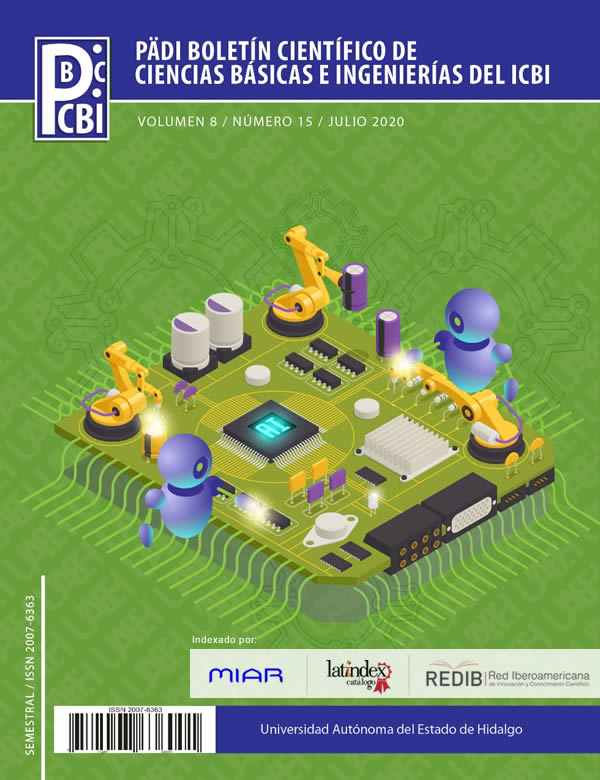Modelo difuso de calidad de servicios en un hotel de cuatro estrellas
DOI:
https://doi.org/10.29057/icbi.v8i15.5820Palabras clave:
Lógica difusa, calidad, hotel de cuatro estrellasResumen
En las empresas de servicios turísticos la calidad de servicios es vital, debido a que una buena calidad impacta en una mejor satisfacción de los clientes y en el incremento de beneficios económicos y mercadológicos para las compañías. Los hoteles se encuentran en la búsqueda constante de estrategias para medir y mejorar la calidad de servicios que brindan a sus clientes. Bajo esta idea, el presente estudio desarrolla un modelo de medición de la calidad de servicios en los departamentos esenciales de un hotel categoría cuatro estrellas de la ciudad de México. Los instrumentos de medición, se analizan con la técnica de conjuntos difusos y se establece un orden de análisis de los atributos evaluados a través del método AHP, además de calcularse los valores de las alternativas con mayor afinidad positivo de acuerdo con el método TOPSIS. Los hallazgos muestran las percepciones que tienen los clientes en los departamentos analizados. El departamento de recepción se considera especialmente importante seguido del departamento de alimentos y bebidas. Finalmente se presentan las recomendaciones del caso para mejorar la calidad de los servicios en el caso de estudio.
Descargas
Información de Publicación
Perfiles de revisores N/D
Declaraciones del autor
Indexado en
- Sociedad académica
- N/D
Citas
Akbaba, A., 2006. Measuring service quality in the hotel industry: A study in a business hotel in Turkey. International Journal of Hospitality Management, 25(2), 170–192. DOI: 10.1016/j.ijhm.2005.08.006
Ali, F., Hussain, K., Konar, R., y Jeon, H.-M., 2017. The Effect of Technical and Functional Quality on Guests’ Perceived Hotel Service Quality and Satisfaction: A SEM-PLS Analysis. Journal of Quality Assurance in Hospitality y Tourism, 18(3), 354–378. DOI: 10.1080/1528008X.2016.1230037
Ali, M., y Raza, S. A., 2017. Service quality perception and customer satisfaction in Islamic banks of Pakistan: The modified SERVQUAL model. Total Quality Management y Business Excellence, 28(5–6), 559–577. DOI: 10.1080/14783363.2015.1100517
Alnawas, I., y Hemsley, J., 2019. Examining the key dimensions of customer experience quality in the hotel industry. Journal of Hospitality Marketing y Management, 28(7), 833–861. DOI: 10.1080/19368623.2019.1568339
Bi, J.-W., Liu, Y., Fan, Z.-P., y Zhang, J., 2020. Exploring asymmetric effects of attribute performance on customer satisfaction in the hotel industry. Tourism Management, 77. DOI: 10.1016/j.tourman.2019.104006
Chen, K.-S., y Yu, C.-M., 2020. Fuzzy test model for performance evaluation matrix of service operating systems. Computers & Industrial Engineering, 140. DOI: 10.1016/j.cie.2019.106240
De Vries, J., Roy, D., y De Koster, R., 2018. Worth the wait? How restaurant waiting time influences customer behavior and revenue. Journal of Operations Management, 63, 59–78. DOI: 10.1016/j.jom.2018.05.001
Hilera, J. R., y Martínez, V. J., 2000. Redes neuronales artificiales: Fundamentos, modelos y aplicaciones. Alfaomega.
Huang, J.-H., y Peng, K.-H., 2012. Fuzzy Rasch model in TOPSIS: A new approach for generating fuzzy numbers to assess the competitiveness of the tourism industries in Asian countries. Tourism Management, 33(2), 456–465. DOI:10.1016/j.tourman.2011.05.006
Klir, G. J., Clair, U. H. S., y Yuan, B., 1997. Fuzzy Set Theory: Foundations and Applications. Prentice Hall.
Kotler, P., 1997. Marketing Management. Prentice Hall.
Lo, Y.-F., y Wen, M.-H., 2010. A fuzzy-AHP-based technique for the decision of design feature selection in Massively Multiplayer Online Role-Playing Game development. Expert Systems with Applications, 37(12), 8685–8693. DOI:10.1016/j.eswa.2010.06.059
Lupo, T., y Bellomo, E., 2019. DINESERV along with fuzzy hierarchical TOPSIS to support the best practices observation and service quality improvement in the restaurant context. Computers y Industrial Engineering, 137. DOI:10.1016/j.cie.2019.106046
Nowacki, M. M., 2005. Evaluating a museum as a tourist product using the servqual method. Museum Management and Curatorship, 20(3), 235–250. DOI:10.1016/j.musmancur.2005.03.002
Nunkoo, R., Teeroovengadum, V., Ringle, C. M., y Sunnassee, V., 2019. Service quality and customer satisfaction: The moderating effects of hotel star rating. International Journal of Hospitality Management. DOI:10.1016/j.ijhm.2019.102414
Parasuraman, A., Zeithaml, V. A., y Berry, L. L., 1985. A Conceptual Model of Service Quality and Its Implications for Future Research. Journal of Marketing, 49(4), 41–50. DOI:10.2307/1251430
Rendeiro, R., 2006. Tourism service quality begins at the airport. Tourism Management, 27(5), 874–877. DOI:10.1016/j.tourman.2005.05.005
Rezaei, J., Kothadiya, O., Tavasszy, L., y Kroesen, M., 2018. Quality assessment of airline baggage handling systems using SERVQUAL and BWM. Tourism Management, 66, 85–93. DOI:10.1016/j.tourman.2017.11.009
Saaty, T. L., 1980. The Analytic Hierarchy Process: Planning, Priority Setting, Resource Allocation. McGraw-Hill.
Sarmah, B., y Rahman, Z., 2018. Customer co-creation in hotel service innovation: An interpretive structural modeling and MICMAC analysis approach. Benchmarking: An International Journal, 25(1), 297–318. DOI:10.1108/BIJ-09-2016-0145
SECTUR., 2019. Estrategia Nacional De Turismo 2019-2020. gob.mx. http://www.gob.mx/sectur/prensa/estrategia-nacional-de-turismo-2019-2024-tendra-un-sentido-democratico-miguel-torruco.
Shah, F. T., Syed, Z., Imam, A., y Raza, A., 2020. The impact of airline service quality on passengers’ behavioral intentions using passenger satisfaction as a mediator. Journal of Air Transport Management, 85, DOI:10.1016/j.jairtraman.2020.101815
Sürücü, Ö., Öztürk, Y., Okumus, F., y Bilgihan, A., 2019. Brand awareness, image, physical quality and employee behavior as building blocks of customer-based brand equity: Consequences in the hotel context. Journal of Hospitality and Tourism Management, 40, 114–124. DOI:10.1016/j.jhtm.2019.07.002
UNWTO., 2019. Why Tourism? | UNWTO. https://www.unwto.org/why-tourism
Urdang, B. S., y Howey, R. M., 2001. Assessing damages for non-performance of a travel professional—A suggested use of “servqual.” Tourism Management, 22(5), 533–538. DOI:10.1016/S0261-5177(01)00008-5
Wallin A. T., y Lindestad, B. (1998). Customer loyalty and complex services: The impact of corporate image on quality, customer satisfaction and loyalty for customers with varying degrees of service expertise. International Journal of Service Industry Management, 9(1), 7–23. DOI:10.1108/09564239810199923
Yoon, K., 1982. Systems selection by multiple attribute decisión making PhD Dissertation, Kansas State University. https://www.semanticscholar.org/paper/Systems-selection-by-multiple-attribute-decision Yoon/7381e4c2b72ff5410a5e6b2c5b5e4d1065c72e5a
Zadeh, L. A., 1965. Fuzzy sets. Information and Control, 8(3), 338–353. DOI:10.1016/S0019-9958(65)90241-X
Zeithaml, V. A., Parasuraman, A., Berry, L. L., y Berry, L. L., 1990. Delivering Quality Service: Balancing Customer Perceptions and Expectations. Simon and Schuster.
Zhang, H., Gu, C., Gu, L., y Zhang, Y., 2011. The evaluation of tourism destination competitiveness by TOPSIS & information entropy – A case in the Yangtze River Delta of China. Tourism Management, 32(2), 443–451.
DOI:10.1016/j.tourman.2010.02.007




















